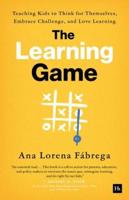Publisher's Synopsis
The more teachers learn about behavioural teaching methods, the more positive they become towards their use in the classroom. The evidence is clear: the use of positive, behavioural teaching methods results in pupils becoming less troublesome and spending more time working. But a contemporary behavioural interactionist approach has more to offer than just effective classroom management. This approach focuses attention on the balance of power between teachers and learners in learning interactions. It also emphasizes the importance of contextual and social factors which influence children's learning. Academic skills are more effectively learned when children are able to interact with the tutor and the task and not simply to respond to instructions and directions.;This book is meant to serve as an introduction to what a "behavioural interactionist" approach to teaching means in practice. It is neither a "how to do it" manual nor is it an attempt to review all of the vast literature in this ever-expanding field. This book does, however, draw on the substantial body of collaborative research undertaken by the authors over the last ten years. It is designed to introduce teachers to this powerful, yet varied, and above all positive approach to teaching.












